Myanmar, the youth in danger
On February 1 2021, the Burmese junta launched a coup. The country’s military, the Tatmadaw, which imposed an authoritative regime until 2011, gradually eased power in the recent decade. The army’s political omnipresence was replaced by what the international community hoped to be slow democratisation. Nonetheless, the recent coup proved otherwise.
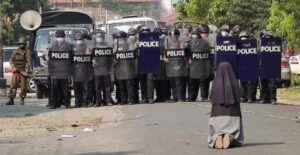 In November 2020, the famous pro-democratic opposition leader, Aung San Suu Kyi, and her party won the election by a landslide. Dissatisfied by their poor result, the military’s proxy party, the Union Solidarity and Development Party (USDP), demanded an election re-run. Their claim of massive election fraud lacked evidence; the Electoral Commission denied their request. Shortly after, the junta seized power. Since, Myanmar has taken a sharp turn to darker days. Violence now reigns in the country; killing, arrests, displacement, lack of food, water, sanitation and healthcare gained a central place in people’s daily lives. The junta uses the terror and brutality they are notorious for to crush the widespread opposition. The organised, generalised and systematic repression is taking a heavy toll on children’s lives, too.
In November 2020, the famous pro-democratic opposition leader, Aung San Suu Kyi, and her party won the election by a landslide. Dissatisfied by their poor result, the military’s proxy party, the Union Solidarity and Development Party (USDP), demanded an election re-run. Their claim of massive election fraud lacked evidence; the Electoral Commission denied their request. Shortly after, the junta seized power. Since, Myanmar has taken a sharp turn to darker days. Violence now reigns in the country; killing, arrests, displacement, lack of food, water, sanitation and healthcare gained a central place in people’s daily lives. The junta uses the terror and brutality they are notorious for to crush the widespread opposition. The organised, generalised and systematic repression is taking a heavy toll on children’s lives, too.
A bloody coup
Since the forceful seizure of power, the army’s crackdown on opposed armed groups and pro-democratic protestors has been deadly. The conflict revived the underlying ethnic tensions that had bedevilled the country for decades. Consequently, armed confrontations between ethnic rebel groups and national military forces have surged since the regime change. Additionally, the strong mobilisation among civilian-organised protest movements were met with extreme repression and claimed many lives. A year after the coup, the United Nations Human Rights spokesperson, Ravina Shamdasani, estimated that 1,500 Burmese perished during the protest alone. They projected the figure to be in the thousands when accounting for all the victims.
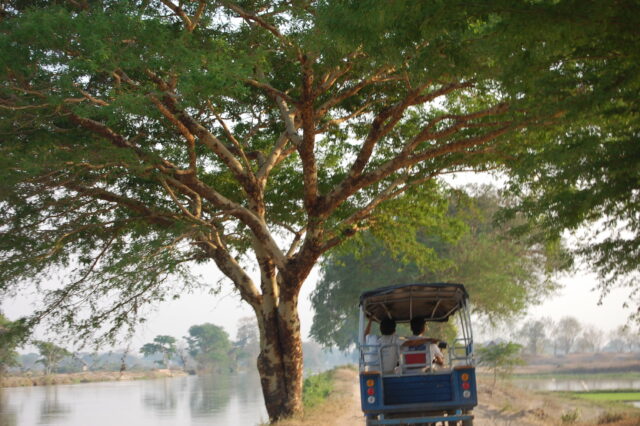
Children have also endured violence. Within the first six months of the conflict alone, the U.N. estimated that at least 75 children had been killed. The brutal conditions under which those young lives were taken demonstrate the degree of violence that has been perpetrated in the country. Children are not only collateral victims of armed confrontations but also targets, sometimes killed in their own homes—the place they should have been the safest.

Al Jazeera reported on eight of those tragic deaths, giving a glimpse of the atrocities occurring daily in Myanmar. Taang Lian Muan Sang, an 11-year-old boy, was on his way to rent a ninja film when he picked up an object he saw on the road. The item was an explosive made out of a motorbike battery; the deflagration killed him. Om Shal, 13 years old, was going to a nearby well to collect water when he stepped on a landmine. The boy died immediately. Kyal Sin Hein, 16 years old, was last seen at a protest. Witnesses reported that security forces loaded his body into a military truck after he was shot in the head. Still, officials never communicated with his parents about the circumstances of their child’s disappearance. Nyi Naing Phyo, 14 years old, was working with his parents on road construction. The military opened fire on civilians’ defence fighters. The young boy fled the area and sought refuge at a nearby railway station. The indiscriminate shooting continued nonetheless, and the boy was hit twice. Fourteen years of age, Sunday Aye was outside a friend’s house playing when 50 soldiers started to shoot. Sunday Aye succumbed.
Imprisonment and arbitrary detention as dissuasive levers
Imprisonment is another tool of deterrence and discipline used by the junta. Since the coup, mass arrests and detention have struck the population. According to AAPP (the Assistance Association for Political Prisoners), as of March 30, 9,991 were arrested, charged, or sentenced, and 1,974 were charged with a warrant but are evading arrest. Among these, numbers are minors. Per the AAPP report, at least 255 children have been arrested. Only 62 have been released; the vast majority (191) remain in jail, and two have been sentenced to death.
From as young as 9 months to 18 years old, kids are arbitrarily detained in police stations, prisons, and military detention centres. Children are jailed with their imprisoned families or used as hostages. Indeed, it is not uncommon for the authority to hold in police stations or detention centres the offspring of those who are wanted. The case of Min Zaw Oo, illustrates how the military uses family and children as a way to curb any form of opposition.
Last year, the army tried to arrest Min Zaw Oo for his participation in the civil disobedient protests. Unable to locate him, the security forces jailed his mother-in-law, wife, and daughter. The young girl has recently spent her third birthday in Yangon’s Insein Prison. The father, in despair, thought of turning himself in. Knowing that his detention by no way equated to the automatic release of his loved one, he is still escaping arrest.
The detention conditions are not only inherently traumatic experiences because children are punished for their parents’ political opinions, but also because of the abusive treatment they endure. Children are brutalised when arrested and while detained. Some have reported being forced to kneel, lie or stand in stressed positions. Su Htet Waing, daughter of political activist Soe Htay, was not even 5-year-old when she was arrested with her mom and older sister. The little girl was compelled to maintain a half-sitting, half-standing position during her 18 days of detention.
Such treatment is considered torture by the United Nations Committee Against Torture. A special U.N. rapporteur discussing the abuse described the atrocity of imprisonment: children are beaten, and some are found with iron rods burns on their legs. A teenager’s testimony to Human right Watch further described the mistreatment of arrested young people. The 17-year-old was beaten while blindfolded for days, hit with a bamboo stick filled with cement and burned with lit cigarettes. He was also buried alive in a mock burial.
Imprisonment of children is a particularly effective oppressive practice with long-lasting consequences. The traumatic experience is not limited solely to custody but instead scares children permanently. Parents of released victims have reported that their children suffer from severe trauma and anxiety and live in constant fear. So Htay’s daughter, released last summer, still screams for help in her sleep. Thus, the arrests of hundreds of children throughout the country are causing them lasting damage, a direct consequence of the junta’s terror campaign intended to spread fear.
Learn more about our privacy policy here.

Displaced population, durable consequences for future generations
The conflict has displaced a significant share of the Burmese population. Bombing, airstrikes, and military raids have indeed left no choice but for many to leave everything they have ever owned behind. They often leave in a rush at the sound of approaching gunfire, with hardly time to collect the bare necessities and run for their lives. The United Nations High Commissioner for Refugees estimates that nearly half a million have fled. At least 150,000 children have been forced from their homes within a year. Some seek refuge in neighbouring countries such as India or Thailand. Nevertheless, the adversity does not end when, after a harrowing journey, one successfully crosses the border. Rather often, unwelcoming governments and a lack of official recognition of refugee status await on the other side, putting their life in limbo. Others are hiding in the nearest jungle, living in particularly precarious conditions and makeshift shelters for protection against the torrential rains that hit the region during the monsoon. The army, blocking aid and attacking health workers, leaves the displaced population in life-threatening conditions.
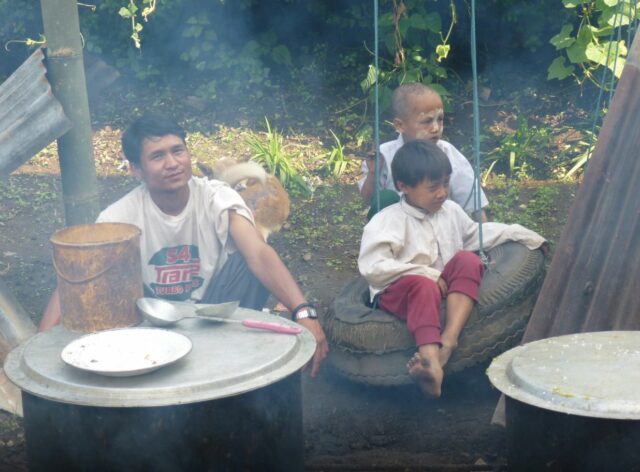 For the displaced children, leaving is a synonym not only for losing their home and touch with their friends, relatives, and community but also lacking access to the most basic necessities. Food is scarce. Some families have been sharing a single meal among their members; some have reported having rice broth as their sole subsistence. Malnourishment is rampant. Clean water is scarce. Healthcare and hygiene are scarce. In the state of Rakhine, nine children have died of acute diarrhoea. In Chin, access to dirking water and lavatories is difficult. In the region of Maway, some of the youth populations are affected by skin disease. In Kayah State, four babies died last summer because of the military blocking medical aid. The situation for displaced people, particularly those who found refuge in the jungle, is so precarious that the U.N. warned that “mass deaths from starvation, disease, and exposure” are expected in Kayah, for instance.
For the displaced children, leaving is a synonym not only for losing their home and touch with their friends, relatives, and community but also lacking access to the most basic necessities. Food is scarce. Some families have been sharing a single meal among their members; some have reported having rice broth as their sole subsistence. Malnourishment is rampant. Clean water is scarce. Healthcare and hygiene are scarce. In the state of Rakhine, nine children have died of acute diarrhoea. In Chin, access to dirking water and lavatories is difficult. In the region of Maway, some of the youth populations are affected by skin disease. In Kayah State, four babies died last summer because of the military blocking medical aid. The situation for displaced people, particularly those who found refuge in the jungle, is so precarious that the U.N. warned that “mass deaths from starvation, disease, and exposure” are expected in Kayah, for instance.
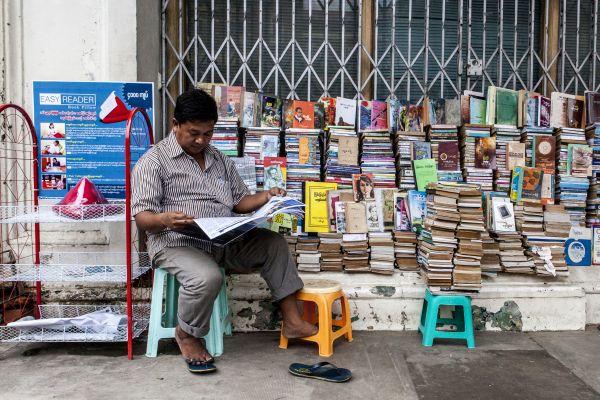 Education is often inexistent. The testimony of a teenager for the Guardian exemplifies the impossibility for displaced children to pursue their education. With only one year left in high school, the girl’s family found refuge in the jungle after their house was razed in combat. The teen confides: “currently, my family doesn’t have a house to live in, and I have no chance to study. All of my dreams were reduced to ashes, just like the homes in Thantlang, including mine”. Youth on the move are also at more risk of abuse, trafficking, enrolment into an armed group, injury, and death. Indeed, fleeing violence does not correlate to escaping violence. On January 17, 2022, the Tatmadaw bombed Ree Khee Buu west of Hpruso. The camp hosted hundreds of internally displaced people who hoped to find a safe shelter. The explosion, only a few meters away from the building where many were shielding, took the lives of two young girls 12 and 15 years of age and an elderly man.
Education is often inexistent. The testimony of a teenager for the Guardian exemplifies the impossibility for displaced children to pursue their education. With only one year left in high school, the girl’s family found refuge in the jungle after their house was razed in combat. The teen confides: “currently, my family doesn’t have a house to live in, and I have no chance to study. All of my dreams were reduced to ashes, just like the homes in Thantlang, including mine”. Youth on the move are also at more risk of abuse, trafficking, enrolment into an armed group, injury, and death. Indeed, fleeing violence does not correlate to escaping violence. On January 17, 2022, the Tatmadaw bombed Ree Khee Buu west of Hpruso. The camp hosted hundreds of internally displaced people who hoped to find a safe shelter. The explosion, only a few meters away from the building where many were shielding, took the lives of two young girls 12 and 15 years of age and an elderly man.
The state of education in Myanmar since the coup
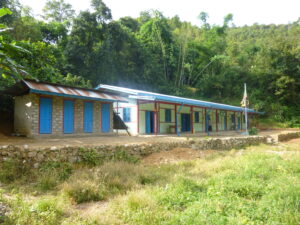 The pre-existing lack of educational access among the Burmese youth furthered by the pandemic and the subsequent school closures was only reinforced by the coup. Indeed, the overthrown of Aung San Su Kyi’s government has had dramatic consequences on the country’s educational system and children’s school access. Firstly, the material damage to educational facilities due to bombing or nearby combat has impeded the prompt return of students behind their school desks. Save the Children estimated that more than 100 schools and academic buildings were attacked in the first few months of the conflict. Secondly, the military presence frightening children and their families alike have pushed many out of the education system. The Tatmadaw have occupied dozens of schools and universities. Soldiers are at school gates, in school buses, and even in classrooms.
The pre-existing lack of educational access among the Burmese youth furthered by the pandemic and the subsequent school closures was only reinforced by the coup. Indeed, the overthrown of Aung San Su Kyi’s government has had dramatic consequences on the country’s educational system and children’s school access. Firstly, the material damage to educational facilities due to bombing or nearby combat has impeded the prompt return of students behind their school desks. Save the Children estimated that more than 100 schools and academic buildings were attacked in the first few months of the conflict. Secondly, the military presence frightening children and their families alike have pushed many out of the education system. The Tatmadaw have occupied dozens of schools and universities. Soldiers are at school gates, in school buses, and even in classrooms.
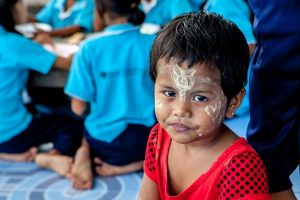 Lastly, the broad civil involvement against the return of the military rules also impacts youth education. A significant portion of the disobedience movement or for professors have been suspended for their participation in the civil refusing to return to work. In May of last year, days before the new school year, the junta threatened to suspend 125,900 of the 430,000 teachers. Forced out of their classrooms or standing up to the army, professors have had to choose between their vocations and convictions. For many such as Dr Daw Shwe Pon, part of the ousted National Unity Government, the message is clear” “Do not forget: teachers that return to [military-run] schools are betraying their country”.
Lastly, the broad civil involvement against the return of the military rules also impacts youth education. A significant portion of the disobedience movement or for professors have been suspended for their participation in the civil refusing to return to work. In May of last year, days before the new school year, the junta threatened to suspend 125,900 of the 430,000 teachers. Forced out of their classrooms or standing up to the army, professors have had to choose between their vocations and convictions. For many such as Dr Daw Shwe Pon, part of the ousted National Unity Government, the message is clear” “Do not forget: teachers that return to [military-run] schools are betraying their country”.
Students and families also have had to choose between education and political opinion. Parents fear not only the indoctrination of their children in the state-run schools, thus betraying their loyalty to the pro-democratic movement, but also the social implication the children’s return to school may have. Many defenders of democracy argue that sending children back to state-run schools is an act of treason. Khin Maung Shwe, a dad from Yangon, faced his family’s disapprobation when he sent his daughter back to school. In an interview, the dad stated his parents berated him and were afraid of the consequences if anyone were to discover the situation. As an example of the coup’s impact on education last May, 90% of students were not enrolled by two days before the end of school registration.
Help Children in Myanmar
Facing adversity, children in Myanmar need your support more than ever. Child sponsorship is a great way to offer Burmese youth a better future. Thanks to your generous donation, your sponsored child will be able to gain access to education. You will also allow them to be fed, dressed and schooled. Your contribution means that your sponsored child will be able to afford all they need to complete their education successfully.

